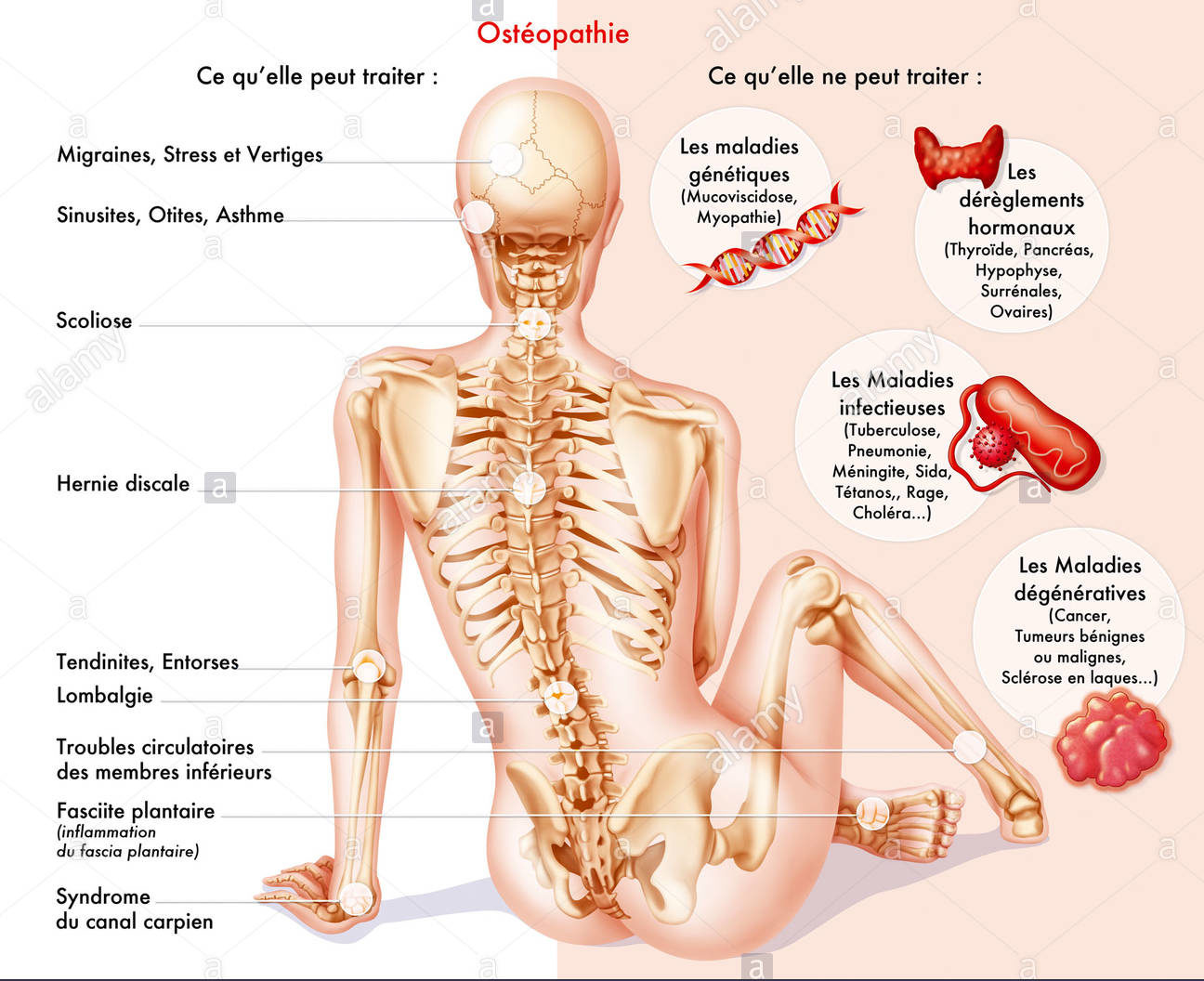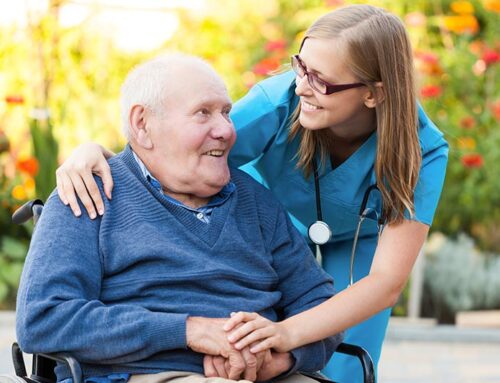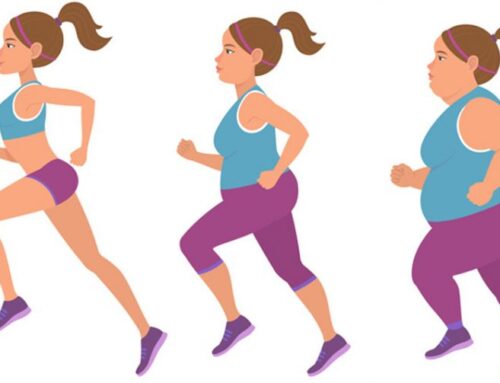There are so many different treatments out there for different complaints and ailments so why should you choose Osteopathy? Osteopathy believes in “treating the patient, not the disease”, looking at your body as a whole and as an individual. The principle is that all body parts are interconnected and the function of one part of the body is dependant on another.
Through osteopathy you can remove the underlying cause of pain. Pain is reduced as is stiffness in muscles and joints. You can increase the range of motions in the joints and treat spinal problems due to poor posture or spinal disk injuries. Through non-invasive treatment you can relieve chronic pain. This is achieved by decreasing the stress on joints and relieving tension in the body, including tension headaches and migraines. Osteopathy Treatment
Another benefit of osteopathy is the ability to adapt the hormonal and structural change in pregnancy. It can also help reduce scaring and adhesions and treat trauma resulting from accidents such as those through sports and motor vehicles injuries.
Suffer from a chronic illness such as asthma, arthritis, IBS etc? Your osteopath will be able to treat and alleviate your symptoms (even if unable to cure the disease itself). This will be huge benefit if your illness is making it difficult for you to go about your normal day to day life.
Osteopathy also has the amazing ability to encourage the body to heal itself. It will increase circulation and reduce blood pressure. Osteopathy also has the benefits of prevention. If you have recently recovered from an injury or condition, osteopathy can help the reoccurrence of the problem.
Many people are under the assumption that osteopaths just deal with your bones and muscles, or your back and neck. However, as you can see osteopathy can in fact be used to deal with a whole range of ailments. The treatment primarily deals with mechanical problems within the neuro-muscular-skeletal system. This includes your ligaments, tendons, joints, muscles and nerves. Basically, if you have an area of your body that hurts when you move it, osteopathic treatment is likely to benefit you.
Osteopathic treatment can be extremely gentle and can also be very relaxing. Whilst allowing you the time to think about your mind and body, the consultations are extremely relaxing and can help to reduce stress by increasing your body efficiency, such as your blood flow, nerve supply and immune system.
During your initial consultation at Bodilight, our one of our Osteopaths will consider your symptoms, the nature of the condition and your general health as well as any concerns you may have. The treatment plan will be explained to you by our Osteopath, who will only proceed once you have given consent. Treatments may include a range of stretches, massage and manipulation techniques. You may be advised of some further exercises to do and some alterations to your lifestyle related to posture, heavy lifting etc. The number of treatments required will vary depending on the problem and conditions associated.
Osteopaths are primary healthcare practitioners, like doctors. You do not need a referral from your GP, unless you choose to use medical insurance you may have. Please feel free to contact Bodilight if you are unsure whether your problem is amenable to osteopathy and we can advise you.
Osteopathy Treatment

Osteopathic Care
steopathy embraces the philosophy that the body has an innate or natural ability to self-regulate and to heal itself. The key factor that permits this process to proceed unimpeded is the ability of the body to circulate all of its fluids and liquids. These fluids include the blood, lymph, synovial fluid, digestive juices, cerebrospinal fluid, axoplasm, and all the other intra and extracellular fluids of the body.
These liquids carry many of the body’s life-sustaining compounds, such as hormones, enzymes and their secretions, immune and anti-inflammatory factors, neural impulses, nutritional elements, and dissolved gases such as oxygen. These fluids are involved in all aspects of life, from the DNA that is suspended within the intracellular fluids, to the fetus which floats in the amniotic fluid. In addition these body fluids serve as mediums for excreting all the bi-products of digestion and cellular respiration.
Any obstruction that impedes the circulation of fluids within the body is the focus of osteopathic assessment and treatment. These impediments may take the form of structural or non-structural blockages. Structural or physical impediments include generalized twists, curves or pulls within the body as well as specific bones, organs or tissues that are misaligned. These faults may either affect the control of a system that controls fluid circulation, or affect the circulation of liquids along with the life sustaining and regulatory products that they carry.
Non-structural impediments may include emotional patterns that are responsible for maintaining the body in a certain adaptation of defence, such as a predisposition to holding the breath. These adaptations are quite often responses to stressful incidents of the past, present, or are of a repetitive nature, such as raising the shoulders in times of stress or cold temperatures.
Over time, the body gradually loses its ability to efficiently self-regulate and to self-heal. Some of this loss may be due to the aging process, the prolonged influence of gravity on posture, trauma, accident, illness, surgical scarring, childbirth, repetitive activity, or the cumulative effects of mental, emotional, physical and spiritual stress. Osteopathy Treatment
In most cases the patient has had some combination of the above experiences. The result of these experiences may manifest themselves locally in the body or more frequently, the symptoms are experienced far from the site of the original site of occurrence. For this reason, the Osteopathic Manual Practitioner is said to assess the whole body. Although treatment may be directed toward several specific areas, the effect of that treatment is often felt throughout the body. It is for this reason that the Osteopathic Manual Practitioner is also said to treat the whole body.
By using a meticulous methodology, as provided through the CCO’s traditional osteopathic program, the Osteopath is able to determine the origin and effects of aging, trauma and other experiences, and create and administer an appropriate treatment plan. This process begins by:
interviewing the patient
performing a complete osteopathic assessment
assessing the position, mobility and quality of certain tissues, fluids, and rhythms of the body.
Once the nature of the patient’s condition is determined, treatment is directed towards helping the body regain its individual and optimal ability to circulate these fluids unimpeded and in sufficient quantity. This restoration of circulation leads to the body’s natural ability to regulate and heal itself.
Uses
Osteopathy Treatment
These include:
- arthritis
- foot, ankle, hip, and knee pain
- back pain, neck pain, and sciatica
- hand, shoulder, and elbow pain
- headaches
- tennis and golfer’s elbow
- postural problems due to pregnancy, sports injury, driving or work strain, or digestive issues
- neuralgia
Osteopathic physicians can also detect conditions that are not treatable through osteopathy, to refer patients to other specialists.
Is an osteopathic physician the same as a chiropractor?
A chiropractor can also treat the back, but their focus is more likely to be on the position of the spine and joints, with the aim of improving nerve function and healing ability. Osteopathy Treatment
A chiropractor is more likely to “pop” or “crack” the joints. An osteopathic physician does not usually do this. A chiropractor will focus on a specific problem area, while an osteopath looks at the body as a whole. An Osteopathic physician is a medical doctor with specialized training in the fast-growing approach to healing and wellness.



